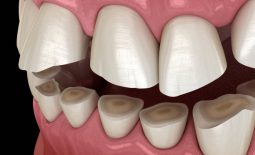Oral Health and the Vulnerable Adult
David Sinclair, director of Harvard Medical School’s Center for Biology of Aging Research, recently stated that it’s very possible the first person to live to 150 has already been born. While any prediction of the future has to be taken as opinion and not fact, it is rather amazing to think about: could 75 soon be considered middle age? It’s true that life expectancy has been consistently rising in the developed world; more specifically, if a person makes it to an advanced age, say 80, the chances of making it to 90, 100 or beyond have been consistently going up.
Continuing advances in medical research have provided us with this optimistic future. Novel medications and therapies can certainly help with many of the issues that develop as we age, but the human body being what it is, issues will still develop. And as we age to 100 and beyond, there will be an ever-increasing number of health conditions that need to be managed. What will health management look like past age 125? No one knows; no one has ever lived that long.
From a dental perspective, one of the greatest achievements of the last couple generations is the expectation that you can keep your teeth your entire life. If we are to see such a dramatic increase in life expectancy, oral health will correspondingly need to take on an increased role in whole-body health. Unfortunately, the medical community has long held that the mouth, and whatever goes on inside it, is largely unrelated to the rest the body. This attitude has begun to change, but even the recent recognition of the “mouth-body connection” implicitly acknowledges that the mouth is still somehow removed from the rest of the system, only indirectly related via some arcane mechanism.
Granted, the mouth is actually considered outside the body from a biologic standpoint. The mouth forms the start of a tube, called the alimentary canal, that runs from the oral cavity, through the body to, well, the other end. Fun fact: there are actually more non-human cells in our body than human cells, mostly in the alimentary canal. In other words, most of you is not you. OK maybe not so fun of a fact. Anyhow, an application of common sense reveals that whatever goes on inside this canal can have direct effects on the rest of the system.
For otherwise healthy individuals with adequate oral hygiene, microorganisms in the mouth are present in balance and don’t really cause much trouble. This symbiosis can be disrupted, however, from two main causes: compromised oral hygiene or compromised general health of the patient. In a worst-case scenario, both conditions are present.
When a patient’s oral hygiene slips, bacteria proliferate with a predominance of harmful bacteria. These bacteria can then enter the body by being swallowed or inhaled, or enter the bloodstream via the hemorrhaging gum tissue. Once inside, they can cause problems with a number of different organs or systems. Numerous studies have shown links between poor oral health and heart disease, pneumonia, pregnancy complications, diabetes, dementia, certain cancers, kidney disease, rheumatoid arthritis, and others.
Some of these conditions can actually be caused by harmful bacteria entering the system, while others are made worse, or harder to manage. These links have been so well established that healthcare professionals are routinely discussing the importance of oral health with their patients, sometimes refusing to move forward with treatment until a dental evaluation and clearance have been obtained.
For some health issues, the connection can be a two-way street. It turns out that some health conditions are affected by, and in turn affect, poor oral health, creating a sort of ‘vicious cycle’ whereby each condition begets the other. With diabetes, the common link is high blood sugar. The tissue inflammation caused by oral bacteria (both in the mouth and internally) weakens the body’s ability to utilize insulin and control of blood sugar. This elevated blood sugar then serves as the perfect environment for the bacteria to thrive, thus perpetuating the cycle.
In patients with dementia, the ability to properly care for one’s self is often compromised at an early stage. The decline in oral health is thus directly caused by the dementia, but the resulting gum disease may also affect the dementia in turn. A 2019 study1 revealed that “P. gingivalis, the keystone pathogen in chronic periodontitis (gum disease), was identified in the brain of Alzheimer’s disease patients. Toxic proteases from the bacterium called gingipains were also identified in the brain of Alzheimer’s patients, and levels correlated with tau and ubiquitin pathology.”
Unfortunately for many older and disabled adults, getting assistance with oral care can be difficult. For those still living at home, a spouse or caregiver often takes on this role. In senior living or hospital settings, oral health needs often go unmet. Due to staffing difficulties, budget constraints, or just an old-fashioned mindset, often these facilities address oral health needs only when pain or infection develop, which is the equivalent of fixing the symptom but not the underlying problem.
Continuing studies are revealing further connections between what’s happening in our mouth and how it affects the rest of our body. Attitudes are starting to change about this esoteric “mouth-body connection” and its importance in managing whole-body health, but certainly not quickly enough. For those of you with loved ones in health care settings, ask the care team what can be provided in terms or oral health maintenance. If they can’t provide it directly, perhaps a third-party solution can be offered. Acting as your own, biggest health care advocate is the key not only to your own best health, but for all who come after. New discoveries and knowledge do not create change, change only happens when people ask for it.
– Dr. McGann
1. Porphyromonas gingivalis in Alzheimer’s disease brains: Evidence for disease causation and treatment with small-molecule inhibitors. SCIENCE ADVANCES 23 Jan 2019 Vol 5, Issue 1



